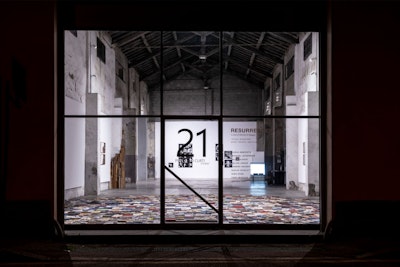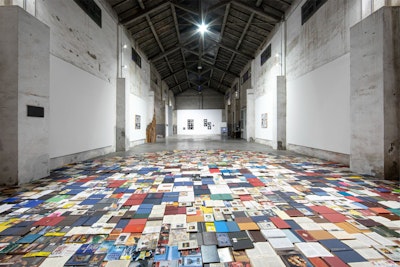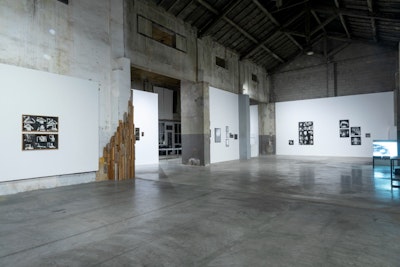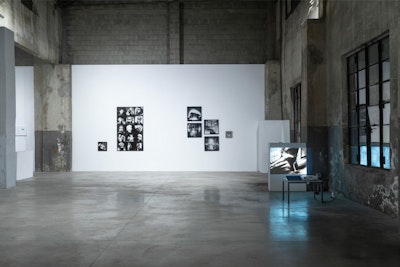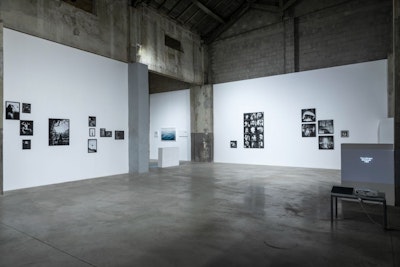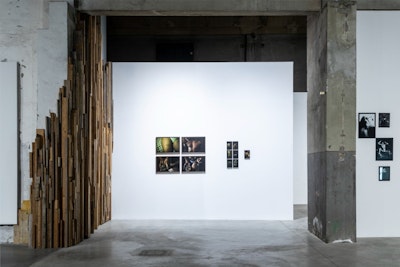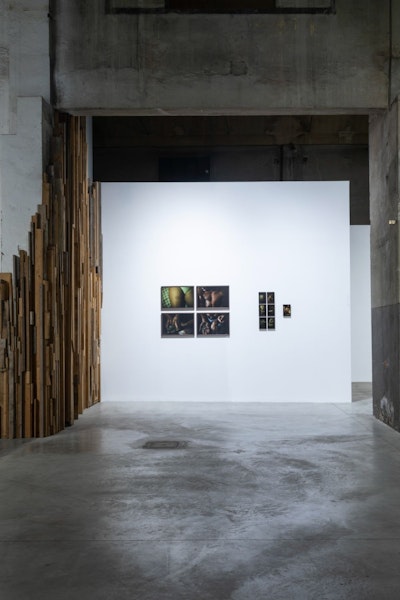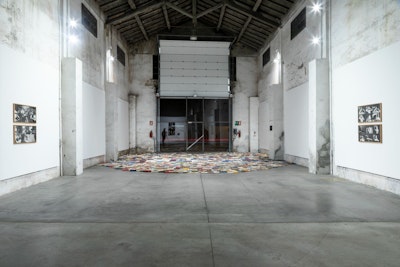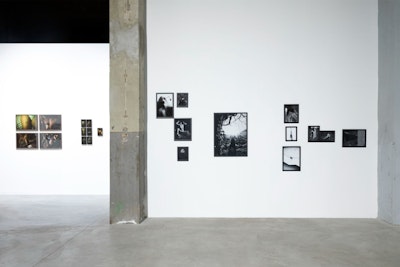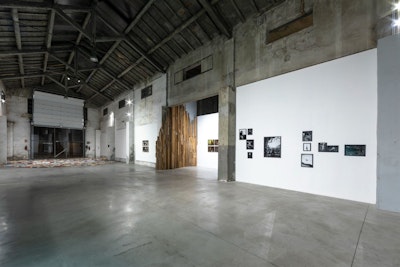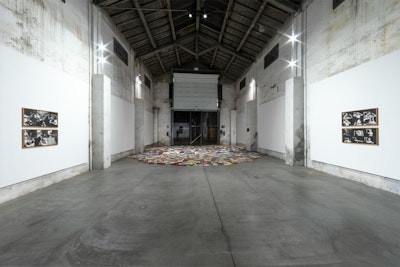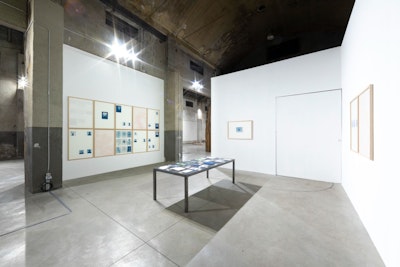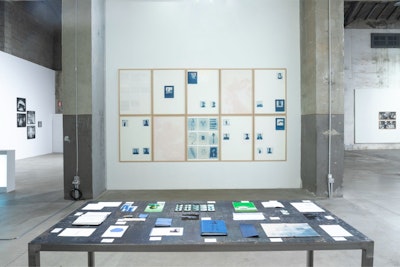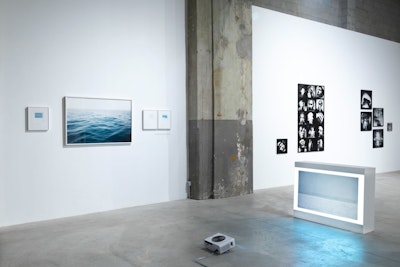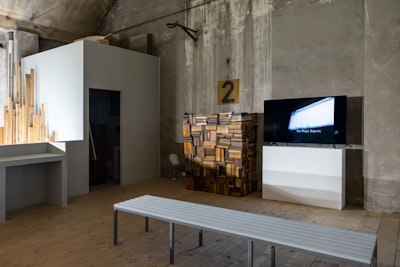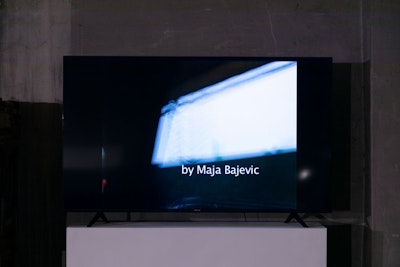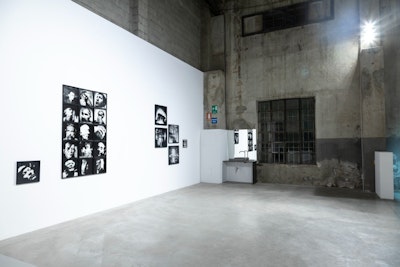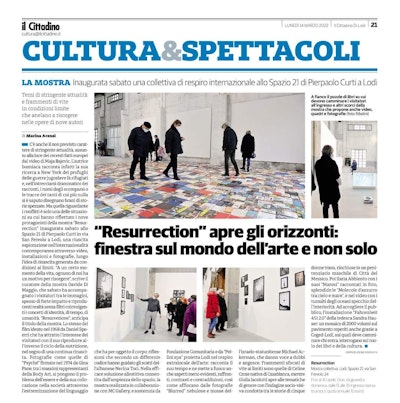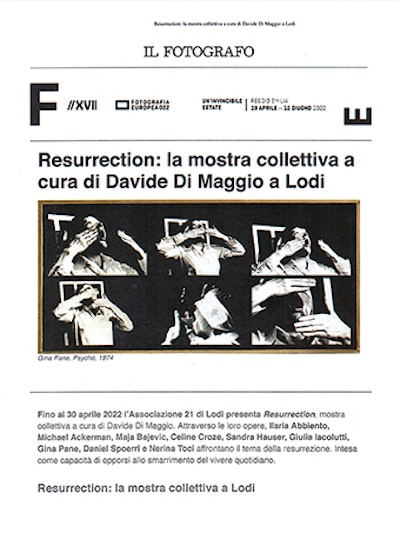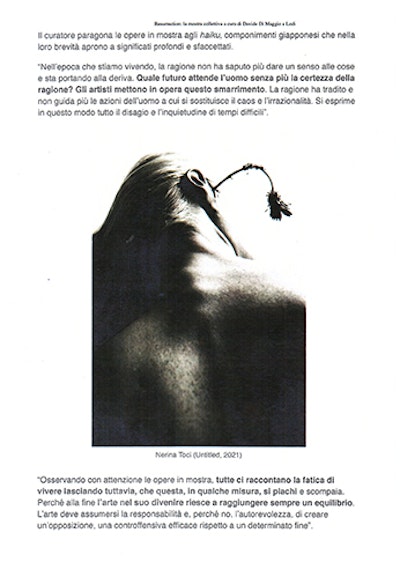Resurrection - Ilaria Abbiento I Michael Ackerman I Maja Bajevic I Celine Croze I Sandra Hauser I Giulia Iacolutti I Gina Pane I Daniel Spoerri I Nerina Toci
Resurrection a cura di / curated by Davide Di Maggio (Associazione 21, Lodi)
L'Associazione 21 di Lodi è lieta di presentare la mostra
RESURRECTION
a cura di Davide Di Maggio
Ilaria Abbiento I Michael Ackerman I Maja Bajevic
Celine Croze I Sandra Hauser I Giulia Iacolutti
Gina Pane I Daniel Spoerri I Nerina Toci
„Sì, c'è qualcosa di invulnerabile, d'inseppellibile in me, qualcosa che frantuma le rocce: si chiama la mia volontà. Silenziosa e immutata resta al passare degli anni. Sì, tu sei quella che trasforma tutti i sepolcri in rovine: salute a te, mia volontà! E soltanto dove ci sono sepolcri, ci sono resurrezioni.“ (cit. Friedrich Nietzsche - dal Canto dei sepolcri)
Questa mostra è mossa da fenomeni di attrazione e repulsione, così come la materia lo è per la fsica. L'evidenza della realtà messa a nudo, senza veli e compromessi, una violenta necessità di resurrezione che va oltre gli stereotipi e il non vero. Partendo dallo scritto di Roland Barthes “...senza dubbio l'immagine non è il reale; ma ne è quantomeno l'analogo perfetto” dove egli intende la percezione di una realtà riprodotta tale e quale senza alcuna mediazione, l'arte in qualche modo deve operare un passaggio che trasforma qualcosa in qualcos'altro e questo hanno fatto gli artisti in mostra, cogliendo la profonda disarmonia della vita, con opere che hanno forme e signifcati assoluti, non simboliche, ma che nascono dalla necessità di non creare nuovi simulacri passeggeri e di dare forma ad una nuova rinascita nell'irrealtà che ci circonda. Come ha scritto André Breton, “...in questa mostra c'é quello che ho già visto molte volte, e che anche altri mi hanno detto di avere visto, quello che credo di poter riconoscere, sia che ci tenga, sia che non ci tenga; c'é quello che ho visto solo raramente e che non sempre ho deciso di dimenticare; c'é quello che per quanto mi sforzi di guardare non oso mai vedere e che è tutto ciò che amo...c'é anche quello che io vedo diversamente da come lo vedono tutti gli altri, e persino quello che comincio a vedere e che non è visibile... ” (da Il Surrealismo e la pittura, 1928). Ad un certo momento della vita, ognuno di noi ha un motivo per risorgere e perfetto emblema della storia dell'uomo, la resurrezione non è solo la forma ma è anche il contenuto di questa mostra che vuole opporre una resistenza forte, per non essere a sua volta metabolizzata in una forma efmera che non le appartiene, riportando attraverso i sensi, ad un alto livello percettivo che non comporta solo il guardare, ma il vedere e il sentire, rivelando oltre alle opere l'artista stesso, come punto di riferimento e centralità. Le opere sono state scelte per rifettere il rapporto tra l'artista, il suo intimo e la sua responsabilità nei confronti della società, seguendo l'idea che l'arte deve creare un'opposizione e il segno dell'artista è l'unica cosa che può produrre una nuova prospettiva. Osservando i lavori degli artisti in mostra, vengono alla mente i componimenti poetici giapponesi, gli haiku, (XVII secolo), basati sulla sintesi e sullo stupore di fronte al mondo. Per la loro immediatezza e apparente semplicità, gli haiku furono per secoli una forma di poesia popolare trasversalmente difusa tra tutte le classi sociali in contrasto alle costruzioni retoriche dei poemi di allora. In realtà l'haiku è invece molto complesso perché si colloca tra percezione veloce e rifessione profonda e nonostante sembri improvviso, dipende da grandi e allenate capacità espressive. Ciò accade nei bellissimi spazi dell'Associazione21, dove le opere sembrano apparentemente di immediata e semplice comprensione, ma come un haiku nascondono un percorso intimo e profondo che le fa assumere una posizione forte, precisa. Lo status di opere d'arte permette loro di diventare muri portanti. Nell'epoca che stiamo vivendo, la ragione non ha saputo piu dare un senso alle cose e sta portando alla deriva. Quale futuro attende l’uomo senza piu la certezza della ragione? Gli artisti mettono in opera questo smarrimento. La ragione ha tradito, e non guida piu le azioni dell’uomo a cui si sostituisce il caos e l’irrazionalità, Si esprime in questo modo tutto il disagio e l’inquietudine di tempi difcili e, osservando con attenzione le opere in mostra, tutte ci raccontano la fatica di vivere lasciando tuttavia, che questa, in qualche misura, si plachi e scompaia, perché alla fne l'arte nel suo divenire riesce a raggiungere sempre un equilibrio. L'arte deve assumersi la responsabilità e, perché no, l'autorevolezza, di creare un'opposizione, una controfensiva efcace rispetto a un determinato fne, con il potere di “simulare” cioè riprodurre e tenere vivi non solo la forma ma l’unicità interiore dell'opera, facendo aforare il carattere e l’anima di chi la realizza. Per quanto piccolo possa essere, il segno dell'artista si deve caricare sempre di un'energia nuova, positiva e profonda rispetto all'efmero della vita.
Mentre l' uomo moderno tiene dentro di sé il suo malessere interiore, gli artisti in mostra riescono a trasmetterci le loro sensazioni: l'arte permette loro di esternare i sentimenti piu profondi, i loro lavori diventano un vero e proprio spazio pulsante dove esprimere il proprio tormento e penetrare nell'animo dell'osservatore, comunicando attraverso il senso di disagio la crisi e la solitudine dell'uomo moderno. L'attitudine interdisciplinare della ricerca, consente loro di muoversi fuori e al di là dei limiti territoriali e linguistici, ponendosi al crocevia tra installazione, fotografa, video e flm, tutte discipline frequentate e intrecciate da ognuno di loro.
L'ambiente, da costruire e plasmare, diviene quindi il punto di incontro dove il loro lavoro si incontra e si confronta, un incrocio di relazioni che prima del loro intervento era meno accessibile. La loro arte si estende a costruire una casa della coesistenza delle diferenze, dove non solo il dialogo tra culture diventa imprescindibile, ma dove anche l'intervento diretto delle opere sullo spazio umano, nella nicchia esistenziale che ognuno di noi si costruisce nell'ambiente, diviene la condizione di partenza della resurrezione. Lo spazio umano, indissolubilmente legato al tempo umano, metafora centrale della nostra vita. La mostra racconta anche di storie personali. Alcuni artisti si sono lasciati suggestionare dallo spazio, creando tra dentro e fuori, tra emozione e architettura un ulteriore legame creativo, culturale e poetico al contempo. Altri hanno agito nei grandi spazi in maniera discreta, attraverso degli interventi piu intimi. Tutti con profondo “rispetto” per l’ambiente e instaurando con quest’ultimo un duplice rapporto di riverenza e potenziamento insieme.
La mostra si pone dunque come momento di rifessione corale, in cui lo stimolo alla meditazione non è riservato solo al pubblico ma rappresenta una fonte d’ispirazione e di ricerca in progress per gli stessi artisti, ritrovatisi a lavorare e a ragionare assieme sull’idea di resurrezione, attenti a leggere nelle pieghe del loro tempo, come ogni artista contemporaneo deve poter fare.
Inaugurazione:
Sabato 12 marzo 2022 alle 17:00
Dal 12 marzo al 30 aprile 2022
Luogo: Associazione 21 I Via San Fereolo 24 I Lodi
In collaborazione con: Claudio Composti I MC2 GALLERY
Un particolare ringraziamento a:
Tony Morgan e Mme Serdaly Morgan I Ginevra
Musée Les Abattoirs I Toulouse
Chiara Padova I Galleria dell'Incisione I Brescia
Galerie Peter Kilchmann I Zurich
INFO:
Associazione 21 I via San Fereolo 24 I Lodi
associazione21@gmail.com I www.associazione21.it
davidedimaggiomilano@gmail.com
======================================================
Associazione 21
is pleased to present the exhibition
RESURRECTION
curated by Davide Di Maggio
Ilaria Abbiento I Michael Ackerman I Maja Bajevic
Celine Croze I Sandra Hauser I Giulia Iacolutti
Gina Pane I Daniel Spoerri I Nerina Toci
“Yes, there is something invulnerable, unbearable in me, something that shatters rocks: it is called my will. Silent and unchanged it remains over the years. Yes, you are the one who transforms all tombs into ruins: health to you, my will! And only where there are tombs, there are resurrections. "
(cit. Friedrich Nietzsche - from Song of the sepulchers)
This exhibition is moved by phenomena of attraction and repulsion, just as matter is for physics. The evidence of reality exposed, without veils and compromises, a violent need for resurrection that goes beyond stereotypes and the untrue. Starting from the writing of Roland Barthes “... undoubtedly the image is not the real; but it is at least the perfect analogue of it ", that it means the perception of a reproduced reality as it is without any mediation, art in some way has to make a transition that transforms something into something else and this is what the artists on show have done, grasping the profound disharmony of life, with works that have absolute forms and meanings, not symbolic, but which arise from the necessity not to create new transitory simulacra, but to give shape to a new rebirth in the unreality that surrounds us.
As André Breton wrote, "... in this exhibition there is what I have already seen many times, and that others have told me they have seen, what I think I can recognize, whether it is important to me or not; there is what I have only rarely seen and which I have not always decided to forget; there is what, no matter how hard I try to look, I never dare to see and that is all that I love ... there is also what I see differently from how everyone else sees it, and even what I begin to see and which is not visible ... ”. (from Surrealism and painting, 1928).
At a certain moment in life, each of us has a reason to be resurrected and a perfect emblem of human history, the resurrection is not only the form but it is also the content of this exhibition that wants to put up a strong resistance, in order not to be in turn metabolized into an ephemeral form that does not belong to it, bringing back through the senses to a high perceptual level that involves not only looking, but seeing and hearing, revealing the artist himself as a point of reference and centrality. The works were chosen to refocus the relationship between the artist, its intimacy and responsibility towards society, following the idea that art must create an opposition and the artist's sign is the only thing which can produce a new perspective.
Observing the works of the artists on display, Japanese poetic compositions come to mind, the haiku, (17th century), based on synthesis and amazement in front of the world.
Due to their immediacy and apparent simplicity, haiku were for centuries a form of popular poetry that was transversally diffused among all social classes in contrast to the rhetorical constructions of the poems of the time.
In reality, the haiku is instead very complex because it is placed between fast perception and deep reflection and although it seems immediate, it depends on great and trained expressive skills.
This happens in the beautiful spaces of the Association21, where the works seem apparently of immediate and simple understanding, but like a haiku they hide an intimate and profound path that makes them assume a strong, precise position. The status of works of art allows them to become load-bearing walls.
In the age we are living in, reason has no longer been able to make sense of things and is leading to drift. What future awaits man without the certainty of reason? Artists implement this bewilderment. Reason has betrayed, and no longer guides the actions of man which is replaced by chaos and irrationality, in this way all the discomfort and uneasiness of difficult times is expressed and, observing carefully the works on display, they all tell us about the fatigue of living, however, allowing this, to some extent, to calm down and disappear, because in the end art in its becoming always manages to reach a balance. Art must assume the responsibility and, why not, the authority, of creating an opposition, an effective counter-attack with respect to a specific end, with the power to "simulate" that is to reproduce and keep alive not only the form but the inner uniqueness of the work, making the character and soul of those who create it pierce. However small it may be, the artist's sign must always be charged with a new, positive and profound energy with respect to the end of life.
While the modern human being keeps its inner malaise within himself, the artists on show are able to convey their feelings to us: art allows them to express their deepest feelings, their works become a real pulsating space in which to express their torment and penetrate into the soul of the observer, communicating through the sense of unease the crisis and the loneliness of modern man. The interdisciplinary attitude of research allows them to move outside and beyond territorial and linguistic limits, placing themselves at the crossroads between installation, photography, video and film, all disciplines frequented and intertwined by each of them.
The environment, to be built and shaped, thus becomes the meeting point where their work meets and confronts, a crossroads of relationships that before their intervention was less accessible.
Their art extends to build a house of the coexistence of differences, where not only the dialogue between cultures becomes essential, but also where the direct intervention of the works on human space, in the existential niche that each of us builds in the environment, it becomes the starting condition of the resurrection. Human space, inextricably linked to human time, the central metaphor of our life. The exhibition also tells of personal stories. Some artists let themselves be influenced by the space, creating a further creative, cultural and poetic link between inside and outside, between emotion and architecture. Others have acted discreetly in large spaces, through more intimate interventions. All with deep "respect" for the environment and establishing a double relationship of reverence and empowerment together with the latter.
The exhibition therefore arises as a moment of choral reflection, in which the stimulus to meditation is not reserved only for the public but represents a source of inspiration and research in progress for all the artists, who found themselves working and reasoning together on the idea of resurrection, careful to read into the folds of their time, as every contemporary artist must be able to do.
Opening:
Saturday 12th March 2022 I 5 pm
From 12th March till 30th April 2022
Place:
Associazione 21 - Via San Fereolo, 24 I Lodi (MI)
In cooperation with: Claudio Composti I Mc2 Gallery
Special thanks to:
Tony Morgan and Mme Christine Serdaly-Morgan I Geneve
Musée Les Abattoires, Toulouse
Chiara Padova I Galleria dell'Incisione I Brescia
Peter Kilchman Galerie I Zurich
INFO:
Associazione 21 I via San Fereolo 24 I Lodi
associazione21@gmail.com
www.associazione21.it
davidedimaggiomilano@gmail.com

